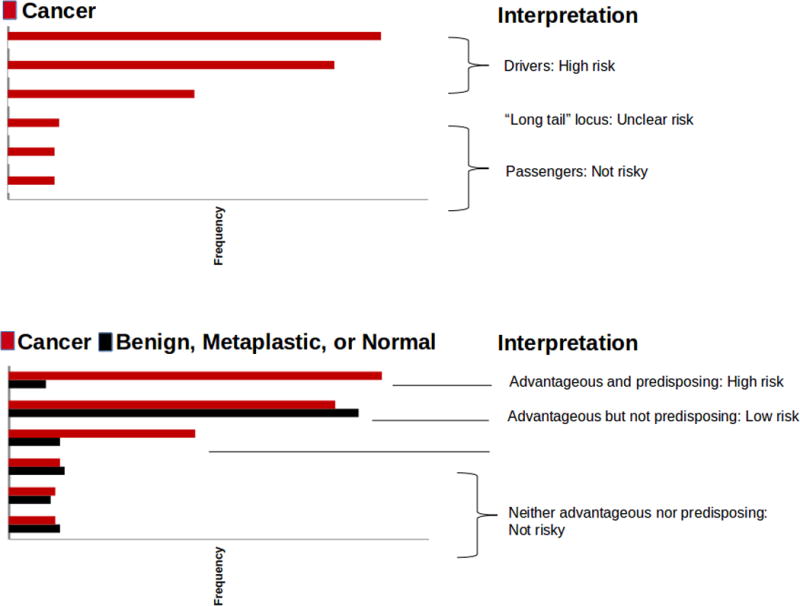Figure 1.

Cancer-only analysis gives incomplete information about risk of cancer. All mutations shown are assumed to be functional. Upper panel, analysis using only cancer samples. Mutations seen at high frequency are assumed to confer a high risk of progression to cancer; those seen at low frequency are assumed to confer low risk. Lower panel, analysis using cancer samples as well as samples from benign tumors, neoplastic tissues, or healthy tissue, so that relative risk can be assessed. Mutations seen at high frequency in both cancer and non-cancer samples are likely to be advantageous non-predisposing mutations of low risk. Mutations seen at intermediate frequency in cancer samples (the “long tail”) but rarely in non-cancer samples are likely to be predisposing non-advantageous mutations which can confer high risk if the cells bearing them are numerous. Thus, use of both cancer and non-cancer samples allows a more accurate assessment of risk.
